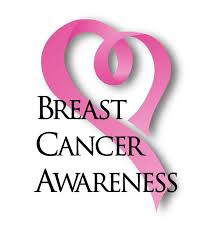Risk Factors
While some breast cancer risk factors are unique to each woman, the greatest risk factor is simply being a woman—even very health-conscious people without known risk factors can be diagnosed with breast cancer. General risk factors include increasing age—both incidence and mortality rates generally increase as a woman grows older. Risk factors specific to individual women include a family history of breast cancer and the presence of the breast cancer susceptibility genes BRCA1 and BRCA2.
The good news is that all women can modify their lifestyle to reduce at least some of the risks. Risk reduction strategies include:
• Maintaining a healthy weight and a Body Mass Index between 18.5 and 24.9.
• Eating lots of vegetables and fruits.
• Exercising for at least 30 minutes a day, 5 days a week.
• Avoiding hormone replacement therapy, if possible.
• Reducing alcohol use and avoiding smoking.
• Breastfeeding.
• Checking Vitamin D levels.
• Reducing exposure to environmental toxins such as gasoline fumes, car exhaust, burned or charred foods, furniture treated with flame retardants, stain-resistant fabrics, and dry cleaning solvents.
Screening Recommendations
In 2009, the US Preventive Services Task Force (USPSTF) issued updated screening recommendations for women who do not have any symptoms of breast cancer and who are not at elevated risk of breast cancer. The USPSTF recommends screening mammography every two years for women ages 50 to 74. The decision to start regular, every-other-year screening mammography before the age of 50 should be an individual one; discussing your own risk factors with your doctor is the best way to understand when and how you should be screened for breast cancer.
Lumps and bumps are normal in every breast. A woman needs to know her own body, and know ‘what is normal’ for her. Although breast self-exams are optional, doing a regular breast self-exam at the same time each month is one way for women to know how their breasts normally look and feel and to notice any changes or the presence of any of the following symptoms:
• Any lump or swelling
• Skin irritation or dimpling
• Nipple pain or retraction (turning inward)
• Redness or scaling of the nipple or breast skin
• Discharge from the nipple other than breast milk
• Dilation of the pores in only one area of skin on your breast that may have an orange peel appearance
If you find even a small change, call your doctor or health care provider. Remember, most of the time these changes in the breast are not cancer. Other screening options include mammograms, tomosynthesis (3-D mammogram), ultrasound, and MRIs.
The Cancer Resource Centers and Other Resources
The Cancer Resource Centers of Mendocino County (CRC) has been working for Mendocino County and its residents since incorporating as a nonprofit 20 years ago, holding steadfastly to the mission of ensuring that no one in our county will face cancer alone. CRC’s Patient Navigation program provides cancer patients, cancer survivors, and the circle of family and friends who support them the information and support they need to understand and manage diagnostic and treatment options, surmount financial and logistic hurdles, and maintain their family and professional life while undergoing treatment. As one of only two stand-alone centers between Marin County and the California-Oregon border, CRCMC’s services are a vital resource for Mendocino County residents. For more information, contact us at:
Cancer Resource Centers of Mendocino County (crcmendocino.org). CRC offices are located at 590 South Dora Street in Ukiah (707-467-3828) and at 45040 Calpella Street in Mendocino (707-937-3833).
The following resources can also help you better understand your risks and how you can reduce them:
Avon Foundation for Women (www.avonfoundation.org/resources/check-yourself/).
Breast Cancer Action (www.bcaction.org/).
Breast Cancer.Org (www.breastcancer.org/symptoms/testing/types/self_exam).
Breast Cancer Risk Assessment Tool, “Know Your Lemons” (www.worldwidebreastcancer.com/).
Komen Foundation (www.komen.org/).
Know BRCA (www.knowbrca.org).
Silent Spring (www.silentspring.org/).
Zero Breast Cancer (www.zerobreastcancer.org/).
Sara O’Donnell, a two-time breast cancer survivor, founded the Cancer Resource Centers of Mendocino County (CRCMC) in rural Northern California in 1995As the Executive Director, she oversees programs and special projects and has represented the organization on community-based participatory research projects funded by the California Breast Cancer Research Program. She is involved in health care policy development in the community through her long-time participation on the Mendocino County Health and Human Services Advisory Board and several other boards.. Sara has received numerous local, state, and national awards for her commitment to our rural, underserved community, including recognition by the Robert Wood Johnson Foundation (RWJF) as one of the 10 foremost Community Health Leaders in the nation in 2007.

